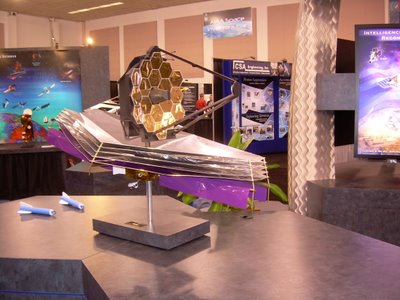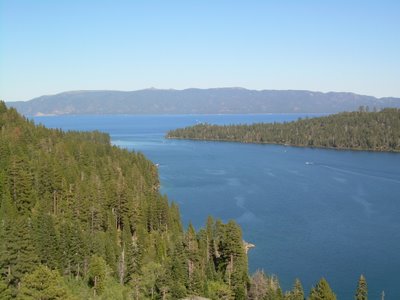
The Spitzer Space Telescope made this infrared photo of supernova remnant Cassiopeia A. This is the brightest radio source outside our own solar system. From the photo we see that this supernova blew up in concentric layers, each composed of different elements. This echoes the progenitor star's makeup, with light elements like hydrogen in the outer layers and heavier elements within. The symnetry of this explosion casts doubt on current theories of supernovae.
A supernova, even in a distant solar system, releases enough radiation to kill every living thing on Earth's surface. These explosions also created the heavy elements that life is made of. Despite their life-or-death importance, little is known about the causes of supernovae. We know that a star in its lifetime somehow maintains an equilibrium between outward radiation pressure and gravity's tendency to make the star collapse. As it uses up its store of hydrogen and helium, the star hungrily moves up the periodic table burning heavier elements. When the elements up to iron are consumed, the star can no longer maintain equilibrium and collapses catastrophically.
The October issue of SCIENTIFIC AMERICAN summarises what is known about core-collapse supernovae. How the collapse turns into an explosion has been a mystery. The very power source of supernovae has been unknown. Until recently it was thought that the explosion was asymnetric, with one finger of the explosion escaping the inward fall. This photo shows that the explosion is so symnetric that the star's layers are preserved. A better theory is needed.
In 1979 the Soviet astrophysicist Shklovsky predicted that Cas A contained a Black Hole at its centre. This point-like source of radiation was detected by the Chandra X-Ray Observatory in 1999. The singularity may have been there even before the star was born. Presence of a Black Hole caused a primordial gas cloud to collapse until nuclear fusion ignited. Radiation balanced gravity within the star for billions of years until the nuclear fuel ran out. When the stars layers suddenly collapsed into the singularity a huge explosion occured. Black Holes have more than enough energy to account for supernovae.
The primary evidence for "dark energy" are redshifts from Type Ia supernovae. Although little was known about what causes them, they were thought to be reliable standard candles for measuring expansion. Recently the Supernova Legacy Survey has discovered SNLS-03D3bb, a Type Ia with twice the luminosity of a standard Type Ia. It will be necessary to somehow identify these "super-Chandrasekhar" supernovae to prevent them from messing up the luminosity-redshift curve.
Despite these questions, the supernova cosmologists think that the way to explore "dark energy" is to find still more supernovae. They have proposed the expensive JDEM mission to find thousands of Type Ia's. They believe that will somehow distinguish between the myriad models of "dark energy." Any number of variables, from non-standard supernovae to a changing speed of light, can make it appear that the universe is accelerating.
On the other hand, there are inexpensive ways to verify that c is changing. We can do so by comparing solar evolution with Earth's temperature record, by using corals with lunar ranging to measure the Moon's apparent recession, or by laboratory experiments to measure c. Multiple lines of evidence point to a c change in physics. If you wish to believe in "dark energy," that will cost you about a billion dollars.
Today's Cassini photo is of Janus over Saturn on September 25. This little moon is about 180 kilometres long. The surface is covered with many craters from impacts with many objects. It is also covered with a layer of fine-grained icy materiel, similiar to Enceladus. Janus and Epimethus share the same orbit, periodically changing places.











































